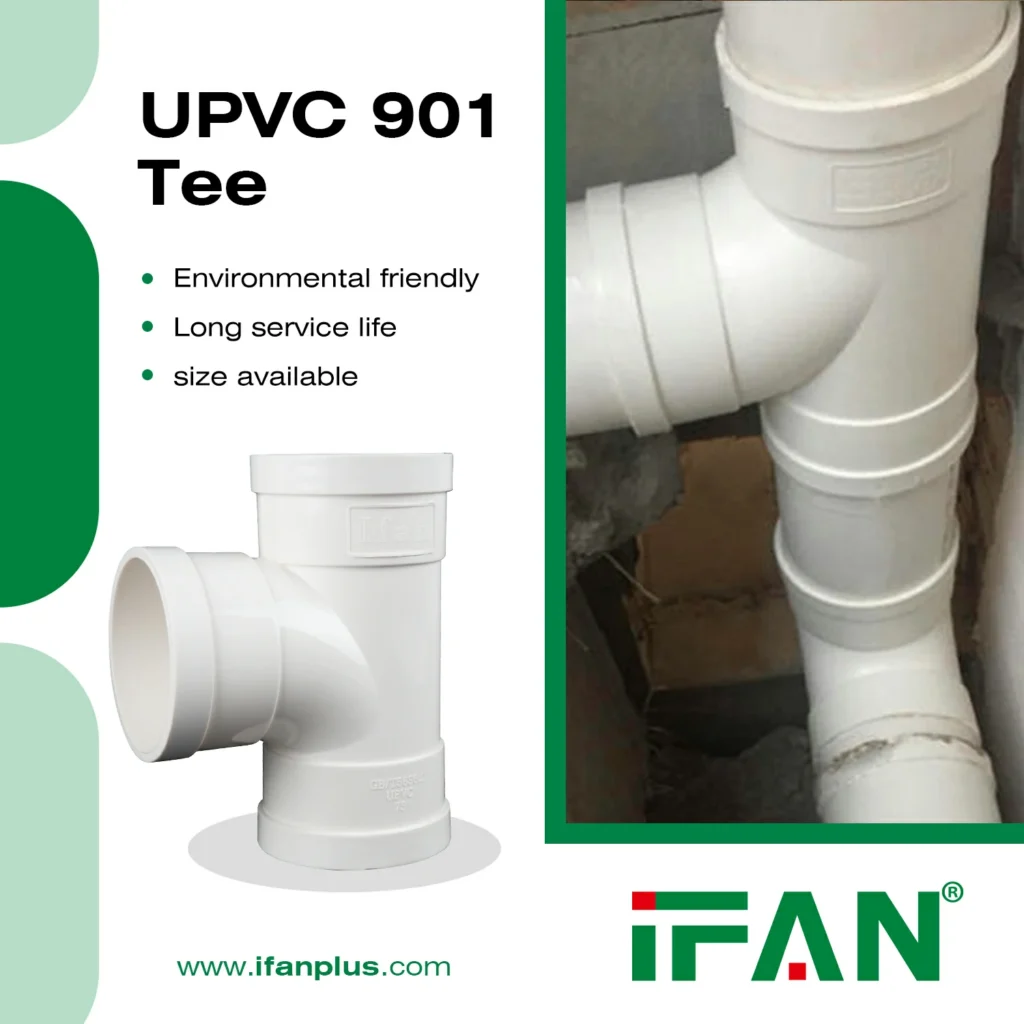UPVC (Unplasticized Polyvinyl Chloride) pipe fittings are known for their durability and low maintenance requirements. However, regular cleaning and proper maintenance can extend their lifespan and ensure optimal performance. Here’s a comprehensive guide to maintaining and cleaning UPVC pipe fittings:
Routine Maintenance Tips:
1. Regular Inspections:
- Periodically inspect the UPVC piping system for signs of wear, cracks, or leaks.
- Check joints and connections for any signs of loosening or damage.
2. Prevent Blockages:
- Avoid disposing of grease, oil, or large debris into the pipes, as they can cause blockages.
- Use drain covers or strainers to catch solid particles before they enter the system.
3. Protect from Physical Damage:
- Ensure that UPVC pipes and fittings are not exposed to heavy impacts or excessive pressure.
- Protect outdoor pipes from UV exposure by using UV-resistant coatings or covers.
4. Monitor Water Quality:
- If used for potable water, ensure the water quality is within the recommended pH range (typically 6.5 to 8.5) to prevent chemical degradation.
Cleaning UPVC Pipe Fittings:
1. Exterior Cleaning:
- Dust and Dirt: Wipe the exterior surfaces of UPVC pipes and fittings with a damp cloth to remove dust and dirt.
- Stains: For stubborn stains, use a mild detergent or soap solution. Avoid abrasive cleaners or scrubbers that can scratch the surface.
2. Interior Cleaning:
- Flushing: Regularly flush the system with clean water to remove any sediment or buildup inside the pipes.
- Chemical Cleaners: Use UPVC-safe chemical cleaners for removing scale or mineral deposits. Avoid harsh chemicals like strong acids or alkalis that can damage the material.
3. Removing Blockages:
- Mechanical Methods: Use a plumber’s snake or auger to remove blockages. Be gentle to avoid damaging the pipes.
- Enzymatic Cleaners: For organic blockages, use enzymatic drain cleaners that are safe for UPVC materials.
Preventive Measures:
1. Insulate Pipes:
- Insulate UPVC pipes in areas prone to freezing temperatures to prevent cracking due to ice formation.
2. Avoid Excessive Heat:
- Ensure that UPVC pipes are not exposed to temperatures above their rated limit (typically 60°C or 140°F) to prevent deformation.
3. Proper Installation:
- Ensure that UPVC pipes and fittings are properly installed with adequate support to prevent stress and sagging.
Troubleshooting Common Issues:
1. Leaks:
- Identify the Source: Check joints and connections for leaks.
- Reapply Solvent Cement: If a joint is leaking, disassemble it, clean the surfaces, and reapply UPVC solvent cement.
2. Cracks or Breaks:
- Replace Damaged Sections: Cut out the damaged section and replace it with a new piece of UPVC pipe and fittings.
- Use Repair Couplings: For minor cracks, use repair couplings or sleeves designed for UPVC pipes.
3. Discoloration:
- Surface Cleaning: Clean the exterior with a mild detergent or UPVC-specific cleaner to restore the original color.
- UV Protection: Apply a UV-resistant coating to prevent future discoloration from sunlight exposure.
Conclusion:
Regular maintenance and proper cleaning of UPVC pipe fittings can significantly extend their lifespan and ensure efficient performance. By following these guidelines, you can prevent common issues such as blockages, leaks, and physical damage, keeping your UPVC piping system in excellent condition for years to come. Always use UPVC-safe materials and methods to avoid damaging the pipes and fittings.
View more:https://www.ifanfittings.com/


